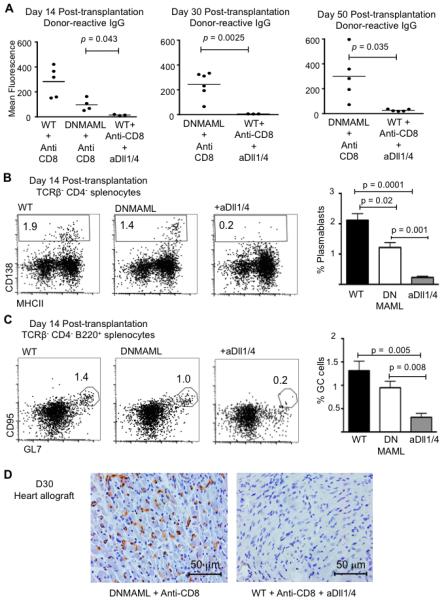Figure 5. Systemic Dll1/Dll4 blockade affects B cell populations and leads to decreased production of allograft-reactive antibodies in CD8-depleted mice.

(A) Quantification of donor-reactive IgG antibodies in the serum of transplant recipients at day 14, day 30 and day 50 after transplantation. IgG levels were decreased at day 14 in DNMAML as compared to WT recipients, but rose subsequently. Systemic Dll1 and Dll4 blockade profoundly decreased the accumulation of alloantibodies over the entire observation period; (B) Flow cytometric quantification of CD138+ plasmablasts in the spleen at day 14 post-transplantation in WT, DNMAML and anti-Dll1/4-treated WT recipients (n=4/group). Representative plots are shown after gating on live TCRβ−CD4− cells. Bar graphs show mean ± SEM; (C) Flow cytometric detection of splenic B220+CD95+GL7+ germinal center (GC) B cells at day 14 post-transplantation in WT, DNMAML and WT anti-Dll1/4-treated recipients (n=4/group). Bar graphs show mean ± SEM; (D) Immunohistochemical analysis of C4d deposition in the transplanted hearts at day 30 reveals decreased deposition in WT recipients treated with anti-Dll1/4 as compared to DNMAML recipients. Data are representative of n=5 (DNMAML + anti-CD8) and n=3 allografts analyzed (WT + anti-CD8 + anti-Dll1/4).
